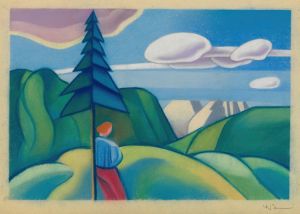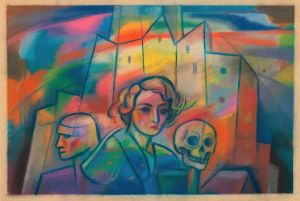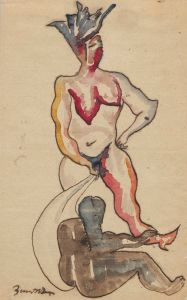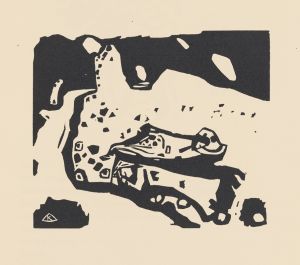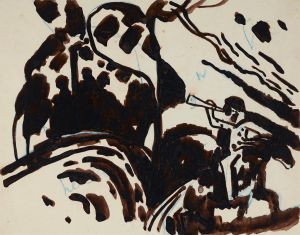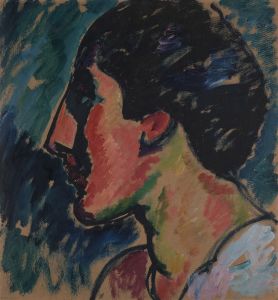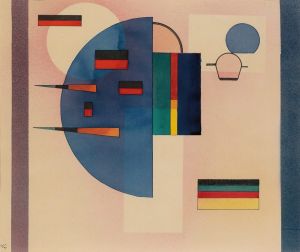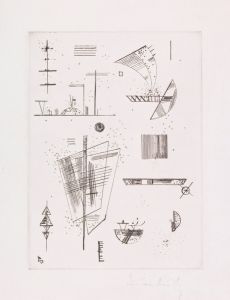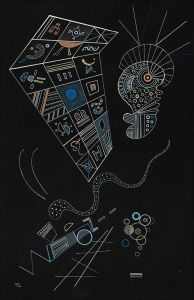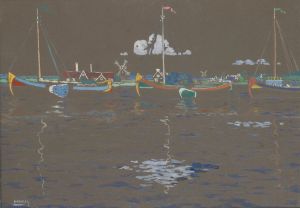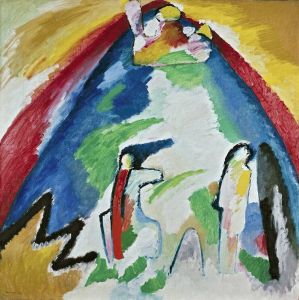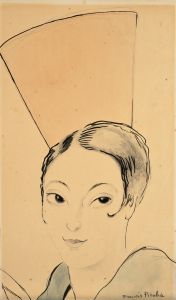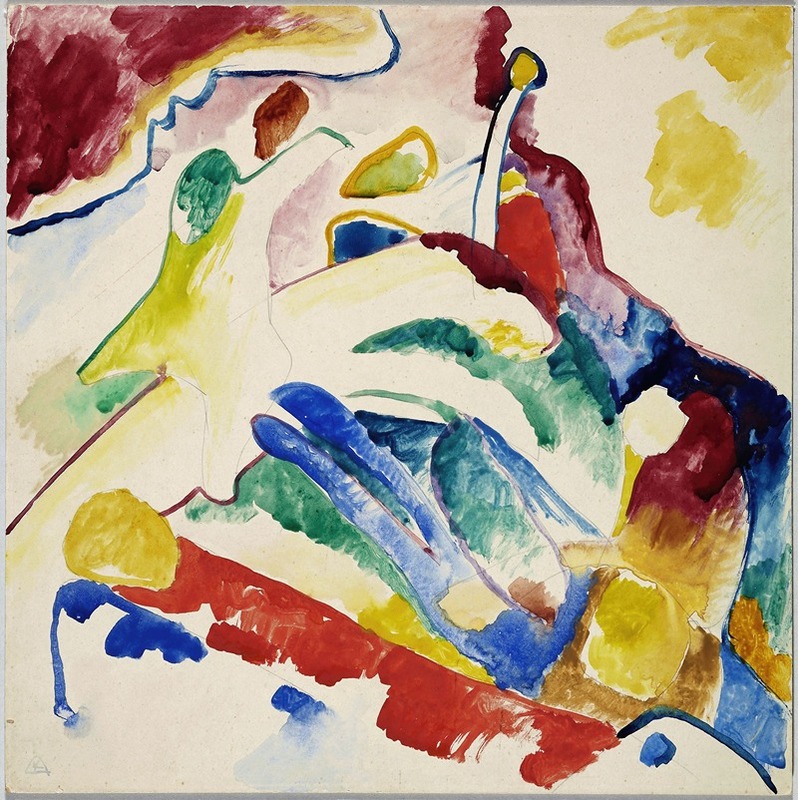
Draft for ‘Composition II’
A hand-painted replica of Wassily Kandinsky’s masterpiece Draft for ‘Composition II’, meticulously crafted by professional artists to capture the true essence of the original. Each piece is created with museum-quality canvas and rare mineral pigments, carefully painted by experienced artists with delicate brushstrokes and rich, layered colors to perfectly recreate the texture of the original artwork. Unlike machine-printed reproductions, this hand-painted version brings the painting to life, infused with the artist’s emotions and skill in every stroke. Whether for personal collection or home decoration, it instantly elevates the artistic atmosphere of any space.
Wassily Kandinsky, a pioneering figure in abstract art, created "Composition II" in 1910. This painting is part of a series of compositions that Kandinsky developed over several years, each representing a significant step in his journey towards pure abstraction. "Composition II" is particularly notable for its vibrant use of color and dynamic forms, which reflect Kandinsky's interest in the emotional and spiritual effects of art.
Kandinsky was deeply influenced by music, and he often sought to create visual equivalents of musical compositions. This influence is evident in "Composition II," where the interplay of colors and shapes can be seen as analogous to the harmony and rhythm found in music. The painting is characterized by its bold use of primary colors, which are juxtaposed with softer, more muted tones. This combination creates a sense of movement and energy, drawing the viewer into a complex visual experience.
The forms in "Composition II" are abstract and non-representational, a hallmark of Kandinsky's mature style. He believed that art should transcend the material world and express deeper spiritual truths. This philosophy is reflected in the painting's composition, where the arrangement of shapes and colors seems to evoke a sense of cosmic order and chaos simultaneously. The viewer is invited to interpret the painting on a personal level, finding meaning in the interplay of its elements.
Kandinsky's theoretical writings, particularly his book "Concerning the Spiritual in Art," provide insight into his artistic approach during this period. He argued that color and form could directly affect the soul, much like music. In "Composition II," Kandinsky employs this theory by using color contrasts and dynamic forms to evoke an emotional response. The painting's abstract nature allows it to transcend specific cultural or historical contexts, aiming instead for a universal language of visual expression.
"Composition II" was part of a larger body of work that Kandinsky exhibited in various shows throughout Europe. His work during this period was instrumental in the development of abstract art, influencing contemporaries and future generations of artists. Kandinsky's compositions were often met with mixed reactions, as audiences were not accustomed to such radical departures from traditional representational art. However, his innovative approach laid the groundwork for future movements, such as Abstract Expressionism.
Unfortunately, "Composition II" was lost during World War II, and only black-and-white photographs of the painting remain. Despite its physical absence, the painting continues to be studied and admired for its groundbreaking approach to abstraction. Kandinsky's legacy as a pioneer of abstract art endures, and "Composition II" remains a testament to his vision and influence in the art world.





